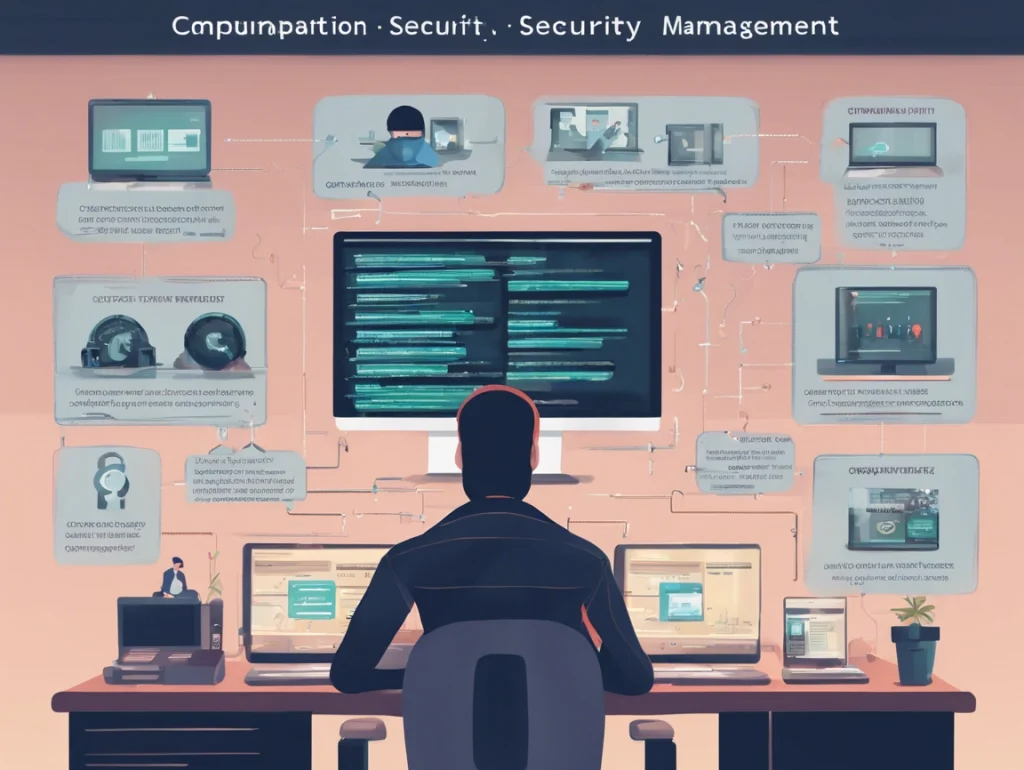The Ultimate Consultative Guide to Application Security Posture Management (ASPM)

1. The Modern App-Sec Headache (and Why You’re Feeling It) If you’re building or running software today, you’re probably juggling micro-services, serverless functions, containers, third-party packages, and an avalanche of compliance check-boxes. Each moving part spawns its own findings, dashboards, and angry red alerts. Before long, risk visibility feels like driving in San Francisco fog at 2 a.m.—you know danger’s out there, but you can’t quite see it. Enter Application Security Posture Management. ASPM promises to defog the windshield by collecting signals from every stage of the software-development life cycle (SDLC), correlating them, and handing you a single, prioritized to-do list. Analysts describe it as a holistic layer that “assesses security signals across development, deployment, and runtime to strengthen overall posture.” 2. But First—What Exactly Is ASPM? At its core, ASPM is a control plane that: Discovers every app, API, service, and dependency—on-prem, cloud, or hybrid. Aggregates results from scanners, cloud-security tools, IaC linters, and runtime sensors. Correlates & de-duplicates overlapping findings so teams see one ticket per issue, not twenty. Prioritizes by business context (think data sensitivity, exploitability, blast radius). Automates workflows—pushing fixes, opening tickets, triggering pull-request comments. Monitors posture continuously and maps it to frameworks like NIST SSDF or ISO 27001. Instead of “yet another dashboard,” ASPM becomes the connective tissue binding dev, ops, and security. 3. Why the Old Way Breaks Down Pain Point Reality Without ASPM Impact Tool sprawl SAST, DAST, SCA, IaC, CSPM—none talk to each other Duplicate findings, wasted time Alert fatigue Thousands of medium-risk issues Teams ignore dashboards altogether Context gaps Scanner flags a CVE but not where it runs or who owns it Wrong people get paged Sluggish remediation Tickets bounce between dev and security Mean-time-to-fix stretches from days to months Compliance chaos Auditors demand proof of secure SDLC You scramble for screenshots Sound familiar? ASPM tackles each row by aligning data, ownership, and workflows. 4. Anatomy of a Mature ASPM Platform Universal Asset Inventory – discovers repos, registries, pipelines, and cloud workloads. Context Graph – links a vulnerable package to the micro-service that imports it, the pod that runs it, and the customer data it handles. Risk Scoring Engine – blends CVSS with exploit intelligence, business criticality, and compensating controls. Policy-as-Code – lets you encode “no critical vulns in internet-facing workloads” as a git-versioned rule. Triage Automation – auto-closes false positives, groups duplicates, and nudges owners in Slack. Fix Orchestration – opens PRs with suggested patches, auto-rolls secure base images, or re-tags IaC modules. Continuous Compliance – produces auditor-ready evidence with zero spreadsheet gymnastics. Executive Analytics – trends mean-time-to-remediate (MTTR), open risk by business unit, and cost-of-delay. 5. Market Momentum (Follow the Money) Analysts peg the ASPM market at roughly $457 million in 2024 and project a 30 % CAGR, topping $1.7 billion by 2029. (Application Security Posture Management Market Size Report …) Those numbers tell a familiar story: complexity breeds budgets. Security leaders are no longer asking “Do we need ASPM?”—they’re asking “How fast can we roll it out?” 6. Building Your Business Case (The Consultative Angle) When you pitch ASPM internally, frame the conversation around outcomes, not shiny features: Risk Reduction – Show how correlating signals shrinks the exploitable attack surface. Developer Velocity – Emphasize that de-duplication and auto-fixes let devs ship faster. Audit Readiness – Quantify hours saved assembling evidence. Cost Avoidance – Compare ASPM subscription fees to breach costs (average $4.45 M in 2024). Cultural Win – Security becomes an enabler, not a gatekeeper. Tip: run a 30-day proof-of-value on a single product line; track MTTR and false-positive rate before vs. after. 7. Key Questions to Ask Vendors (and Yourself) Does the platform ingest all my existing scanner data and cloud logs? Can I model business context—data classification, SLA tier, revenue mapping? How are risk scores calculated—and can I tweak the weights? What remediation automations exist out-of-the-box? Is policy-as-code version-controlled and pipeline-friendly? How quickly can I produce SOC 2 or PCI reports? What’s the licensing metric—developer seat, workload, or something else? Can I start small and expand without forklift upgrades? 8. A 90-Day Roll-Out Roadmap Phase Days Goals Deliverables Discover 1-15 Connect repos, pipelines, cloud accounts Asset inventory, baseline risk report Correlate 16-30 Turn on deduplication & context graph Single prioritized backlog Automate 31-60 Enable auto-ticketing and PR fixes MTTR sliced in half Govern 61-75 Write policy-as-code rules Fail-fast gates in CI Report 76-90 Train execs & auditors on dashboards Compliance export, QBR pack 9. Use-Case Spotlights Fintech – maps findings to payment flows, satisfying PCI DSS with daily delta reports. Healthcare – labels workloads that store PHI and elevates their risk score automatically for HIPAA. Retail – auto-patches container images powering Black-Friday promos, slashing outage risk. Critical Infrastructure – pulls SBOMs into a “crown-jewel” catalog, blocking vulnerable components before deployment. 10. Advanced Topics Worth Nerding Out On AI-Generated Code – ASPM can flag insecure/copied snippets created by LLM pair programmers. SBOM Lifecycle – ingest SPDX/CycloneDX files to trace vulns back to build time. Runtime Drift – compare what’s in prod vs. what was scanned pre-deploy. Red-Team Feedback Loop – feed pen-test findings into the same risk graph for continuous hardening. Zero-Waste Prioritization – combine reachability analysis with exploit-intel feeds to ignore non-exploitable CVEs. 11. Common Pitfalls (and Easy Escapes) Pitfall Escape Hatch Treating ASPM as just another scanner Evangelize it as the orchestration layer tying scans + context + workflow Boiling the ocean on day one Start with a pilot repo, prove value, iterate Ignoring developer experience Surface findings as pull-request comments, not guilt-trip PDFs Over-customizing risk formulas too early Stick with defaults until trust is earned, then fine-tune Forgetting cultural change Pair KB articles, office hours, and gamified leaderboards with the rollout 12. The Road Ahead (2025 → 2030) Expect ASPM platforms to: Blur into DSPM and CNAPP suites, delivering a code-to-cloud risk graph. Leverage generative AI for auto-generated remediations and context-aware chat assistants. Shift from dashboards to decisions—suggesting fixes, estimating blast-radius, and auto-merging safe PRs. Align to
Leveraging Open Source Tools for Comprehensive Application Security

Application security is a continuously evolving field that requires vigilance, a broad understanding of threat landscapes, and a powerful set of tools.
Understanding Malware in the Software Supply Chain

With high-profile breaches like SolarWinds and vulnerabilities such as Log4j exposing significant risks, understanding the components of your software is essential.
Application Security Posture Management: Safeguarding Your CI/CD Pipeline with OWASP Top 10 for CI/CD

Discover how a robust container security strategy, aligned with the OWASP Top 10 for CI/CD, can safeguard your applications and data.
Application Security Posture Management: Strengthening Container Security in the DevOps Era

From misconfigurations to runtime attacks, the vulnerabilities are numerous and can lead to devastating breaches.
Application Security Posture Management: Enhancing Security with Static Application Security Testing (SAST)

In today’s fast-paced application development landscape, security vulnerabilities pose a significant threat to organizations.
Application Security Posture Management: Mastering Software Composition Analysis (SCA) in Modern Development

A staggering 84% of codebases contain at least one open-source vulnerability, highlighting the urgent need for effective Software Composition Analysis (SCA).
Application Security Posture Management: Deep Dive into Infrastructure as Code (IaC) Security

In today’s fast-paced digital landscape, the integration of Infrastructure as Code (IaC) has transformed IT management while introducing new security challenges.
